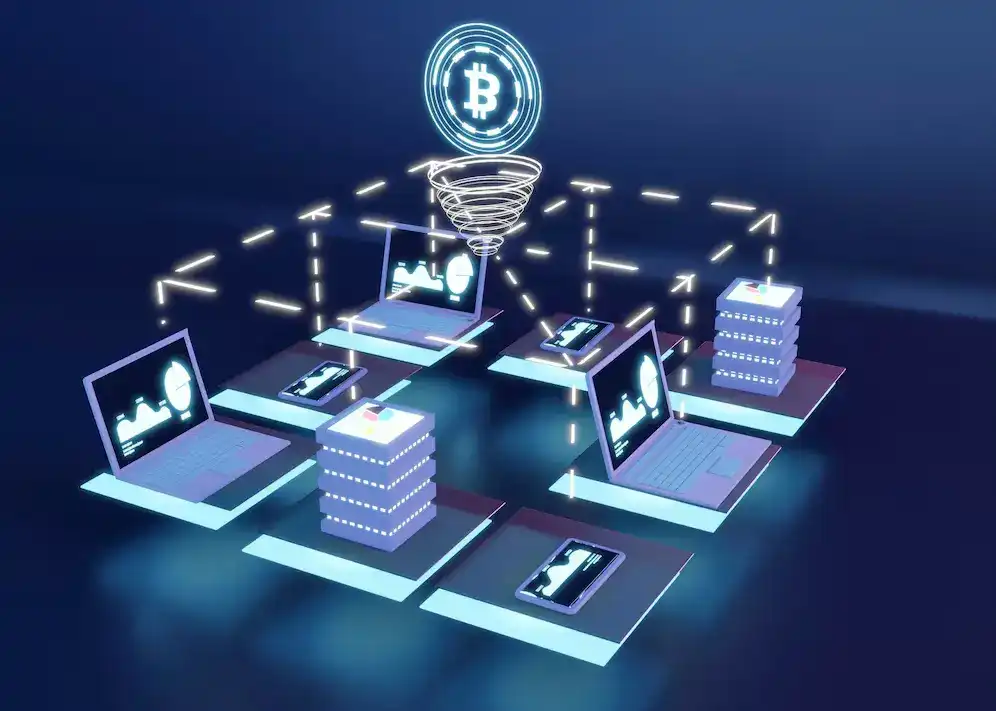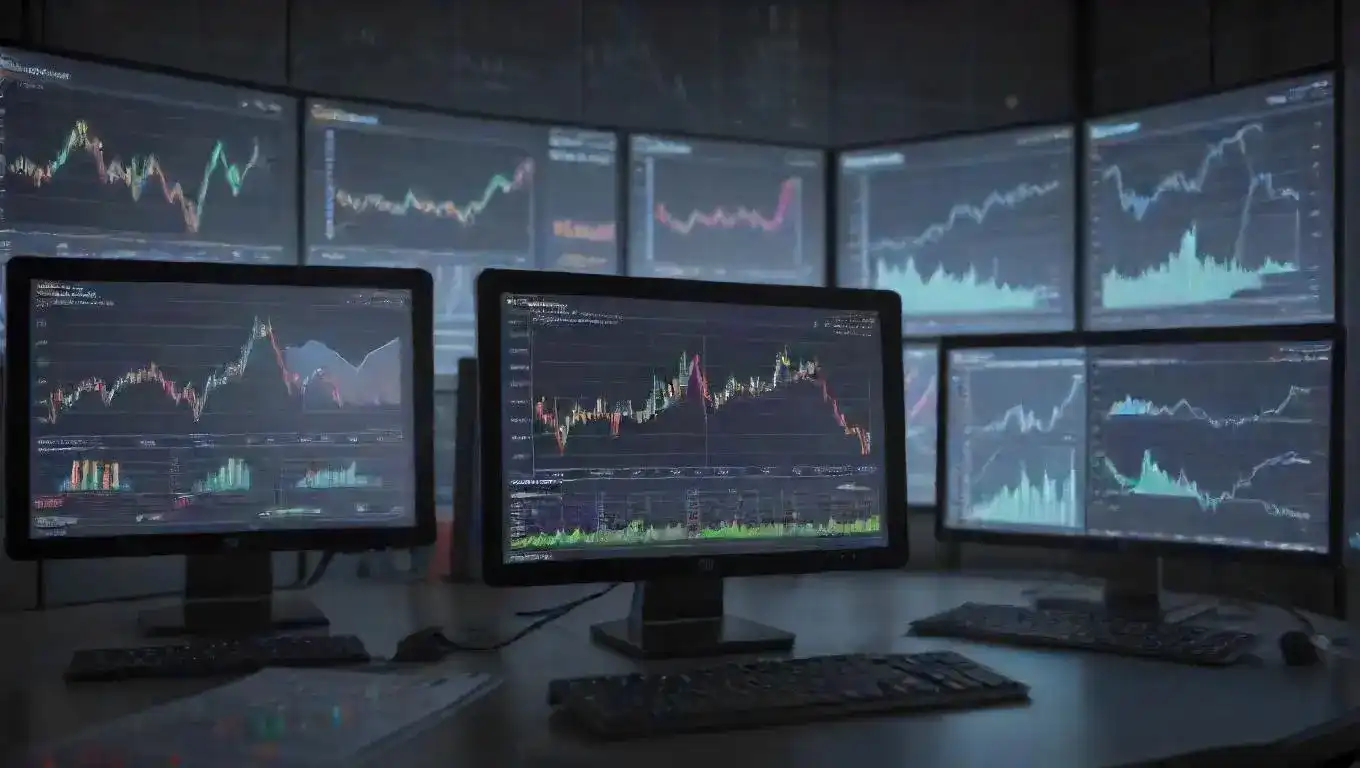Market Equilibrium: Supply Meets Demand
Emily Willis

Photo: Market Equilibrium: Supply Meets Demand
Market Equilibrium: Where Supply Meets Demand in the Real World
In the intricate dance of the economy, few concepts are as fundamental and impactful as market equilibrium. It's the silent force that dictates the prices we pay and the quantities of goods and services available to us every day. Far from being a dry economic theory, understanding supply and demand at this pivotal point is essential for consumers making informed purchasing decisions, businesses crafting winning strategies, and policymakers shaping a stable economy. This article will demystify market equilibrium, exploring how this crucial balance is achieved and why its dynamics matter to everyone.
Understanding the Fundamentals: The Forces of Supply and Demand
Before delving into market equilibrium, it's crucial to grasp the two primary forces that drive it: supply and demand. These are not just abstract terms; they represent the collective decisions of millions of individuals and businesses.
The Law of Supply: What Producers Offer
Supply refers to the quantity of a good or service that producers are willing and able to offer for sale at various prices over a specific period. The law of supply states that, all else being equal, as the price of a good or service increases, the quantity supplied will also increase, and vice versa. Think of it this way: if you're a baker, you'd be more inclined to bake more loaves of bread if you could sell them for a higher price, as it would likely increase your profit.
Several factors influence a producer's willingness and ability to supply goods:
- Production Costs: The cost of inputs like raw materials, labor, and energy directly impacts supply. If these costs rise, producers might supply less at any given price.
- Technology: Advancements in technology can make production more efficient, reducing costs and increasing supply.
- Number of Sellers: More businesses entering a market typically lead to an increase in overall supply.
- Government Policies: Taxes, subsidies, and regulations can either encourage or discourage production, thereby affecting supply.
- Expectations: Producers' expectations about future prices can influence their current supply decisions.
The Law of Demand: What Consumers Want
Demand, on the other hand, refers to the quantity of a good or service that consumers are willing and able to purchase at various prices over a specific period. The law of demand dictates that, generally, as the price of a good or service increases, the quantity demanded will decrease, and conversely, as the price falls, the quantity demanded will increase. This makes intuitive sense: you're probably more likely to buy a new smartphone if its price is lower.
Key factors that influence consumer demand include:
- Consumer Income: For most goods (normal goods), as income rises, demand increases. For some goods (inferior goods), demand might decrease as income rises.
- Tastes and Preferences: What's fashionable or desirable can significantly shift demand.
- Prices of Related Goods:
- Substitutes: If the price of a substitute good (like coffee for tea) decreases, demand for the original good might fall.
- Complements: If the price of a complementary good (like car fuel for cars) increases, demand for the original good might fall.
- Population: A larger population generally means greater overall demand.
- Consumer Expectations: If consumers expect prices to rise in the future, they might increase their current demand.
Where the Magic Happens: Defining Market Equilibrium
Market equilibrium is the sweet spot where the forces of supply and demand meet. It's the state in a market where the quantity of a good or service that consumers are willing to buy (quantity demanded) precisely equals the quantity that producers are willing to sell (quantity supplied).
At this unique point, there is a stable market price, known as the equilibrium price, and a corresponding equilibrium quantity. At the equilibrium price, neither buyers nor sellers have an incentive to change their behavior. The market "clears," meaning there are no leftover goods and no unsatisfied buyers.
Imagine a bustling marketplace. If apples are priced too high, many vendors will have apples left over (excess supply). If they're priced too low, eager customers will quickly buy them all, and some will be left wanting (excess demand). The equilibrium price is the price at which every apple brought to market finds a buyer, and every buyer willing to pay that price finds an apple.
The Dynamics of Disequilibrium: Surpluses and Shortages
Markets don't always operate at equilibrium. Fluctuations in supply and demand can lead to states of disequilibrium, specifically surpluses or shortages. However, market forces naturally work to push prices back towards equilibrium.
What is a Surplus?
A surplus, also known as excess supply, occurs when the quantity supplied of a good or service exceeds the quantity demanded at a given price. This typically happens when the market price is set above the equilibrium price.
-
Impact: When producers have more goods than consumers are willing to buy, they face unsold inventory. To clear this excess stock and avoid financial losses, producers will be incentivized to lower their prices. This downward pressure on prices then encourages more consumers to buy, gradually reducing the surplus until the market returns to equilibrium.
-
Real-world Example: Consider a new smartphone model that a manufacturer overestimates demand for. If they produce too many units and price them too high, they'll end up with a surplus of phones in warehouses and on store shelves. To move these units, they'll likely offer discounts or promotions, bringing the price down and increasing sales until the surplus is eliminated.
What is a Shortage?
Conversely, a shortage, or excess demand, arises when the quantity demanded of a good or service exceeds the quantity supplied at a given price. This situation often occurs when the market price is below the equilibrium price.
-
Impact: When consumers want to buy more of a good than producers are offering, competition among buyers intensifies. Consumers are willing to pay higher prices to secure the limited supply. This upward pressure on prices incentivizes producers to increase their supply, as they can now earn more profit, while simultaneously discouraging some consumers from buying. This adjustment continues until the shortage is resolved and market equilibrium is restored.
-
Real-world Example: Think about the rush for certain items before a major storm, like bottled water or batteries. If the price remains at its usual level, demand can spike unexpectedly, leading to a shortage. Retailers, seeing empty shelves and eager customers, might raise prices (or face informal price increases through scalping), which helps to ration the limited supply and encourages suppliers to restock quickly.
Factors that Shift Supply and Demand Curves
Market equilibrium is not static; it's a dynamic state constantly adjusting to changes in underlying conditions. These changes cause the entire supply or demand curve to shift, leading to a new equilibrium price and equilibrium quantity.
Shifts in Supply
A shift in the supply curve means that at every given price, a different quantity will be supplied. Factors causing supply shifts include:
- Changes in Input Prices: If the cost of raw materials or labor decreases, producers can supply more at the same price, shifting the supply curve to the right (an increase in supply). Conversely, an increase in input costs shifts it to the left (a decrease in supply).
- Technological Advances: New technologies that make production more efficient or cheaper will increase supply.
- Natural Conditions: For agricultural products, good weather can lead to bumper harvests and increased supply, while natural disasters (like droughts or floods) can drastically reduce supply.
- Number of Sellers: An increase in the number of firms in a market boosts supply.
- Government Policies: Subsidies encourage production (shifting supply right), while taxes or stricter regulations can reduce it (shifting supply left).
Shifts in Demand
A shift in the demand curve means that at every given price, a different quantity will be demanded. Factors causing demand shifts include:
- Changes in Consumer Income: An increase in income generally increases demand for most goods.
- Changes in Tastes and Preferences: If a product becomes more popular, its demand curve shifts right. If it falls out of favor, it shifts left.
- Changes in the Prices of Related Goods:
- Substitutes: If the price of a substitute rises, demand for the original good may increase.
- Complements: If the price of a complement falls, demand for the original good may increase.
- Population Changes: An increase in population typically leads to higher demand for most goods and services.
- Consumer Expectations: If consumers anticipate a future price increase, they might increase their current demand.
Understanding these shifts is crucial because they explain why prices and quantities in markets are constantly changing. For example, a severe drought (a supply shift) can drastically reduce the supply of certain crops, leading to higher prices and lower quantities available to consumers.
Real-World Applications and Case Studies
The principles of market equilibrium are not
Latest ✨
View All"Education for All" is a fundamental human right. Learn how equitable access to quality learning unlocks a brighter future for everyone.
Emily Willis
Plan your business exit strategy: a roadmap to a successful future. Maximize value, protect your legacy, and ensure a smooth transition.
Emily Willis
Uncover the dynamic relationship between tariffs and global trade patterns. Explore how tariff changes reshape trade flows, impact consumers and businesses, and drive strategic adaptations in supply chains and markets. Discover insights from real-world cases and learn strategies for businesses to thrive in this evolving landscape.
Emily Willis
Cultivate strong, visionary leaders! Learn actionable strategies to drive organizational success, resilience, innovation, and growth.
Emily Willis
Business
View All
June 8, 2025
Process Improvement for Business GrowthStruggling with inefficiencies? Discover how process improvement unlocks sustainable growth, cuts costs, and boosts customer satisfaction. Optimize your operati...
Emily Willis

June 8, 2025
Talent Acquisition: Find the Best PeopleMaster strategic talent acquisition. Go beyond recruitment to identify, attract, & secure top talent that drives innovation & future organizational success.
Emily Willis

June 8, 2025
Choose the Right Legal EntityUnlock your business's potential! Discover how choosing the right legal entity impacts liability, taxes, and capital. A crucial guide for entrepreneurs.
Emily Willis
Economy
View AllUncover the invisible market forces shaping prices & production. Learn how supply & demand drive our economy—essential for consumers & businesses.
Read MoreThe stock market is a crucial component of the global economy, providing a platform for capital formation, investment, and wealth creation. Understanding stock market movements, including bull and bear markets, market volatility, and factors influencing stock prices, is essential for investors, businesses, and policymakers. Economic, financial, and behavioral factors all play a role in shaping stock market dynamics.
Read More2025 Global Economic Outlook: Expect a slowdown, high uncertainty from trade & geopolitics, but watch for tech & climate opportunities.
Read MoreEntertainment
View All
August 5, 2024
Classic Films: Timeless Masterpieces in the Age of StreamingClassic films may seem outdated in today's world of instant gratification and endless streaming options, but they offer enduring stories, masterful storytelling, historical insights, technical innovation, and artistic value that surpass modern offerings. While classic films face challenges such as accessibility and pacing, there are ways to overcome these obstacles, such as using streaming services, visiting local libraries, attending film festivals, and utilizing online resources.
Emily Willis

August 5, 2024
Arts Education's Importance: Nurturing Creativity and Fostering ExpressionArts education is often overlooked in a world focused on standardized tests and STEM subjects, but it plays a vital role in nurturing creativity, self-expression, and essential skills in students. Arts education allows students to unleash creativity, build confidence, improve communication and collaboration skills, develop critical thinking and problem-solving abilities, increase cultural awareness and appreciation, and enhance emotional intelligence.
Emily Willis

August 4, 2024
The Evolution of Digital Distribution in the Music Industry: Challenges and OpportunitiesThe music industry has been transformed by digital distribution, which allows quick access to a vast catalog of music through streaming services and online stores.
Emily Willis
Health
View AllRegular physical activity is crucial for maintaining long-term health and well-being. It has numerous benefits, including improving cardiovascular health, aiding in weight management, enhancing mental health, strengthening bones, boosting immune function, and promoting longevity.
Emily Willis
our minds are often overwhelmed with information and stimuli, leading to stress and anxiety. Mindfulness and meditation offer tools to cultivate inner peace and well-being. Mindfulness involves being present in the moment without judgment, while meditation involves focusing attention on an object or thought.
Emily Willis
Heart disease is a leading cause of death globally, but early detection and prevention strategies can reduce its impact. This article discusses the importance of early detection, common risk factors, preventive measures, and lifestyle changes for heart health. Understanding heart disease, recognizing symptoms, and undergoing regular screenings are crucial. Common risk factors include high blood pressure, high cholesterol, diabetes, smoking, obesity, physical inactivity, and family history. Symptoms of heart disease include chest pain, shortness of breath, fatigue, irregular heartbeat, and swelling. Diagnostic tests and screenings include blood pressure measurement, cholesterol screening, blood glucose test, ECG, stress test, and imaging tests. Preventive measures include adopting a heart-healthy diet, regular physical activity, quitting smoking, managing stress, maintaining a healthy weight, and limiting alcohol consumption. Medications and treatment options may be necessary for individuals at high risk or diagnosed with heart disease.
Emily Willis
Trending 🔥
View All
1
2
3
4
5
6
7
9
10
Sports
View AllAugust 5, 2024
Sports for Social Good: Promoting Diversity, Inclusion, and Community Engagement
Read MoreTechnology
View All
August 5, 2024
Blockchain's Potential to Revolutionize Various Industries
Blockchain technology, originally associated with cryptocurrencies, is now being recognized for its transformative potential across various industries. It offers decentralization, transparency, and immutability, reshaping traditional practices and opening doors to new possibilities. In financial services, supply chain management, healthcare, government, real estate, and the energy sector, blockchain is revolutionizing operations through efficient transactions, smart contracts, secure data management, and more.

August 4, 2024
Exploring the Potential of Quantum Computing in Modern Technology
Quantum computing is a revolutionary technology that uses quantum bits, or qubits, to process information. It has the potential to solve complex problems, revolutionize cryptography, accelerate drug discovery, optimize complex systems, and enhance artificial intelligence.

August 4, 2024
Bridging the Digital Divide: Ensuring Everyone Has Access to Technology
we can bridge this gap and create a more inclusive digital landscape.

August 5, 2024
Top 5 VR Headsets for PC Gaming in 2024
Discover the top 5 VR headsets for PC gaming in 2024! Immerse yourself in stunning visuals, immersive audio, and intuitive controls with these powerful VR devices. From high-end options to budget-friendly alternatives, we've got you covered on your journey to the ultimate VR experience.





















